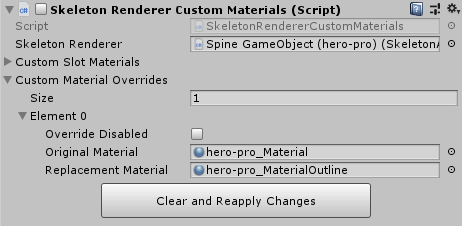


Spine2d outline skin#
The component contains the skeleton game object hierarchy, which animation to play, what skin to use and it also specifies the material used for rendering the model. Spine model The SpineModel component is put in a game object to bring the graphics and animation to the screen. Spine scene The Defold resource tying together the Spine JSON data file and the Defold image atlas file that is used to fill bone slots with graphics.
Spine2d outline software#
Create this file from your animation software of choice. No images are embedded in this file though. Make sure to use only Spine 2.x features to ensure compatibility with the Defold runtime!Ĭoncepts Spine JSON data file This data file contains the skeleton, all the image slot names, skins and the actual animation data. The runtime provides only limited additional support for Spine 3.x features. The Spine runtime implementation in Defold supports all Spine 2.x features. It is particularly useful to animate characters and animals, but works very well for other types of objects, like ropes, vehicles or foliage.ĭefold implements runtime evaluation and animation expressed in the Spine JSON format.ĭefold supports most of Spine’s animation features, including inverse kinematics (IK). Skeletal animation is very smooth since the engine can interpolate the location of each bone for each frame. Defold supports animations created or exported in the Spine JSON format. This skeleton, or rig, is then animated and individual images are attached to the bones. Spine animation let you build an invisible, virtual skeleton consisting of a hierarchy of interconnected bones. In cutout animation separate pieces of the animated object (e.g body parts, eyes, mouth etc) are moved individually between each frame. This is a fundamentally different technique from flipbook animations that is closer to cutout animation. Spine animation provides 2D skeletal animation support (see ).

Spine is a third party animation tool by Esoteric Software.


 0 kommentar(er)
0 kommentar(er)
